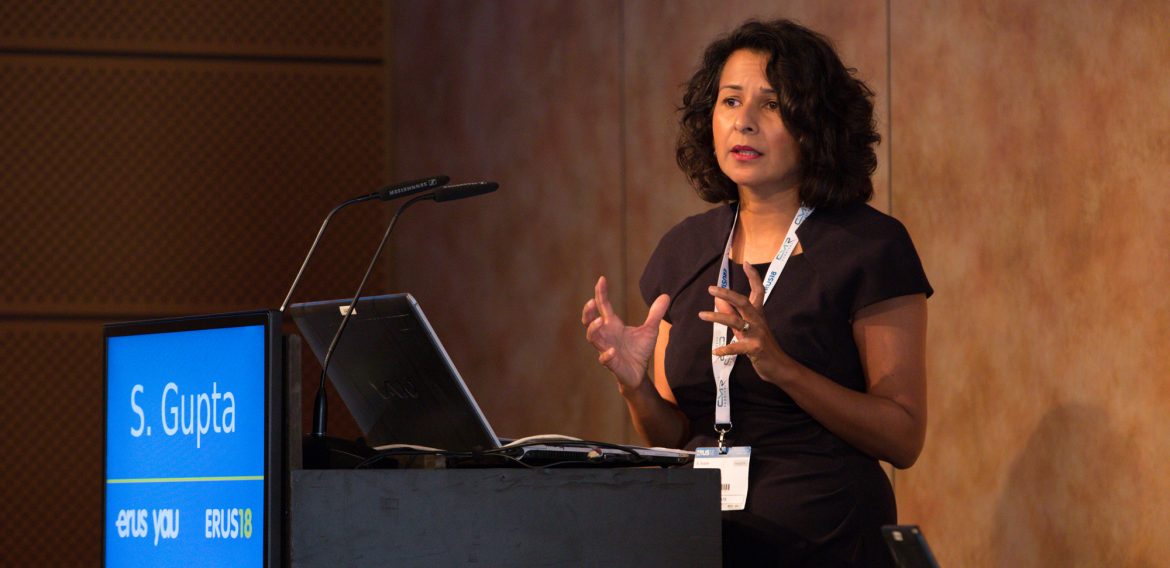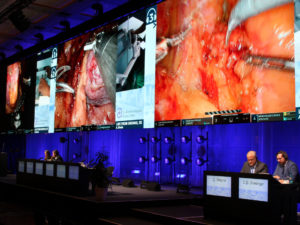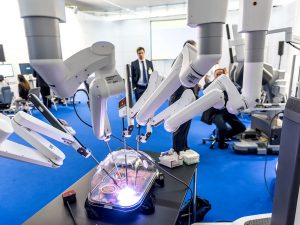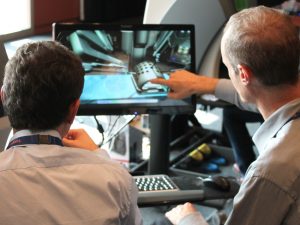Following a session devoted mainly to standards of care, the scientific programme of the Junior ERUS-YAU Meeting pivoted to practical matters: the logistics of the operating theatre and the communication within a surgical team.
This session formed part of the Junior ERUS-YAU Meeting at ERUS18: a special half-day programme focused on the needs of young robotic urologists. The meeting included live surgery (streamed from Stockholm), a discussion panel and an overview of the best new papers on various topics.
The robotic dance
Dr. Geert De Naeyer (Aalst, BE) welcomed Dr. Stavros Tyritzis (Athens, GR) who took over a planned talk by Dr. Justin Collins. Dr. Tyritzis noted that not many of the 88 delegates had heard of the so-called ‘robotic dance’, which is a term that refers to an efficiency process that is designed to improve turnover time in robotic centres between procedures.
The concept was previously introduced at the 2012 ERUS meeting, where the experiences of a UK and a US centre were compared, the latter of which had introduced efficiency measures. The UK centre averaged 2 robotic urology cases per nine-hour working day over the course of two years, with a mean turnaround time of 84 minutes. The US centre, on the other hand, doubled the number of cases thanks to a mean turnaround time of only 19 minutes.
Dr. Tyritzis used Formula 1 pit teams as an example of teams that were effectively cooperating to reduce time spent on tyre changes for the drivers. Teams of experts, with people working in parallel is key. Even relatively small numbers of personel, can yield a huge number of team combinations. For example, at Karolinska in Stockholm, 3 robotic surgeons, 4 assistants, 6 scrub nurses, 4 circulators, 5 anaesthesiologists can yield 1440 different teams. Having set teams of experts who are used to working together can improve efficiency.
Avoiding the duplication of steps, maintaining a consistent theatre layout (with only a rotating bed and the rest in fixed positions), and creating detailed schedules for every member of the team are examples of the “lean thinking principles” that can reduce turnaround.
Other techniques to make the OR more efficient can be found in the ‘Lean Six Sigma’ methodology, which finds its origins in factory business models from the United States and Japan. Dr. Tyritzis specifically referred to how four of the methodology’s ‘eight wastes’ were relevant to surgical teams. “Wasted time waiting for a next step, under-utilised talent, unnecessary motions or movement and over-processing, delivering above the desired result.”
Dr. Denaeyer emphasised the need for a leader or manager who effectively divides tasks. This could be the surgeon as ‘maestro’ of the OR, or a separate logistical manager. Another show of hands revealed that not many participants worked in centres that could achieve three RARP cases per OR in a single day.
Human error and communication
Ms. Sharmila Gupta (Colchester, GB), consultant colorectal surgeon spoke on human error in surgical teams, and how effective communication strategies could minimise this. “The comparison is often made between airline flight and surgery- where human error, often based on miscommunication can have disastrous results,” Ms. Dasgupta started her talk.
“One advantage of robotic surgery over the olden days of open surgery is that the team can better follow the procedure and advise or interject before serious errors can be made.”
Using a willing audience member, she effectively demonstrated how the human brain can be distracted from tasks, leading to a drop in performance. “This was a demonstration of dual task interference. Other examples in the OR are unnecessary talking, music, or mobile phones.”
In training situations, ironically it is the trainer who is the main source of dual task interference. When being instructed, students either break their flow or shut out the instructions. “As instructors, you want a quiet environment and to give clear instructions. In a critical situation you want people to use the SIXSTEPS method,” Dasgupta said, referring to: Stop, Identify, eXplain, Structured Teaching, Elicit understanding, Proceed if Safe.





